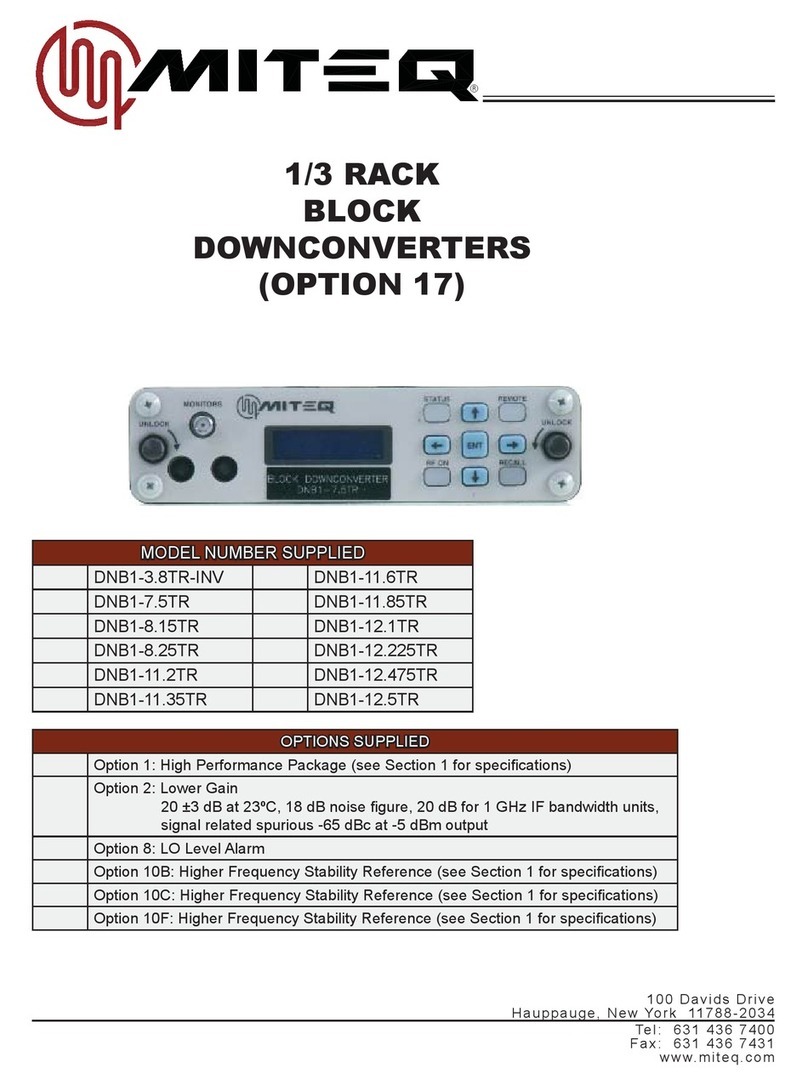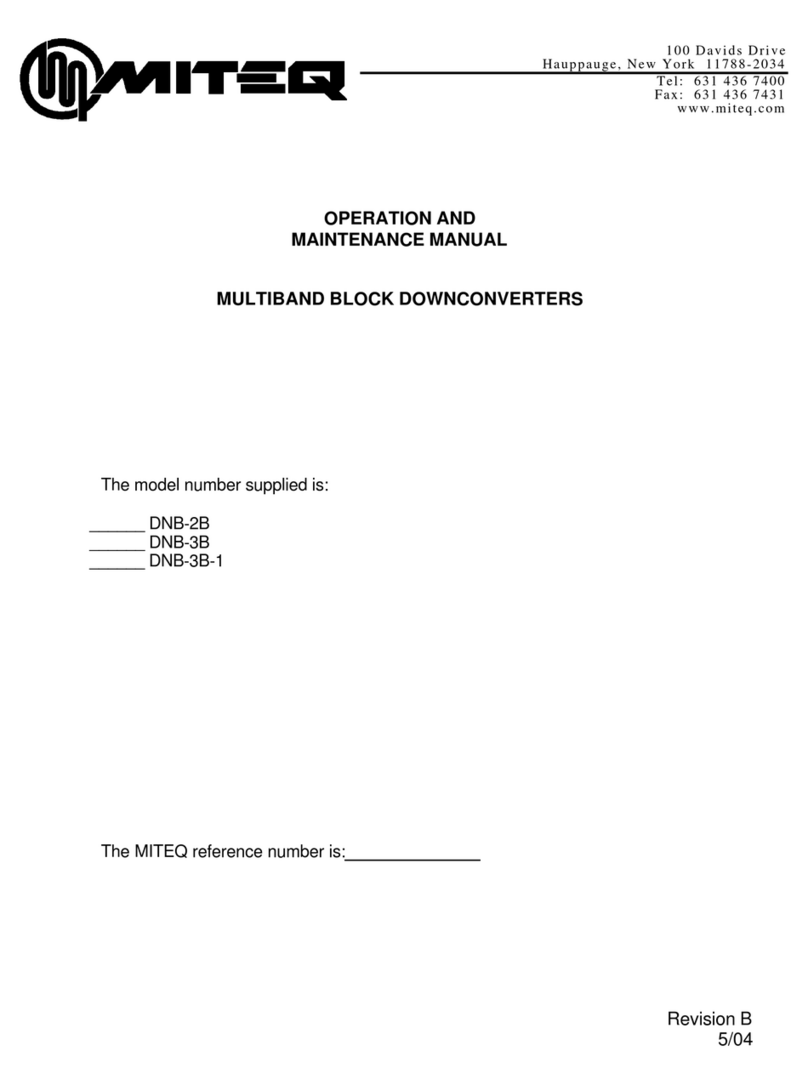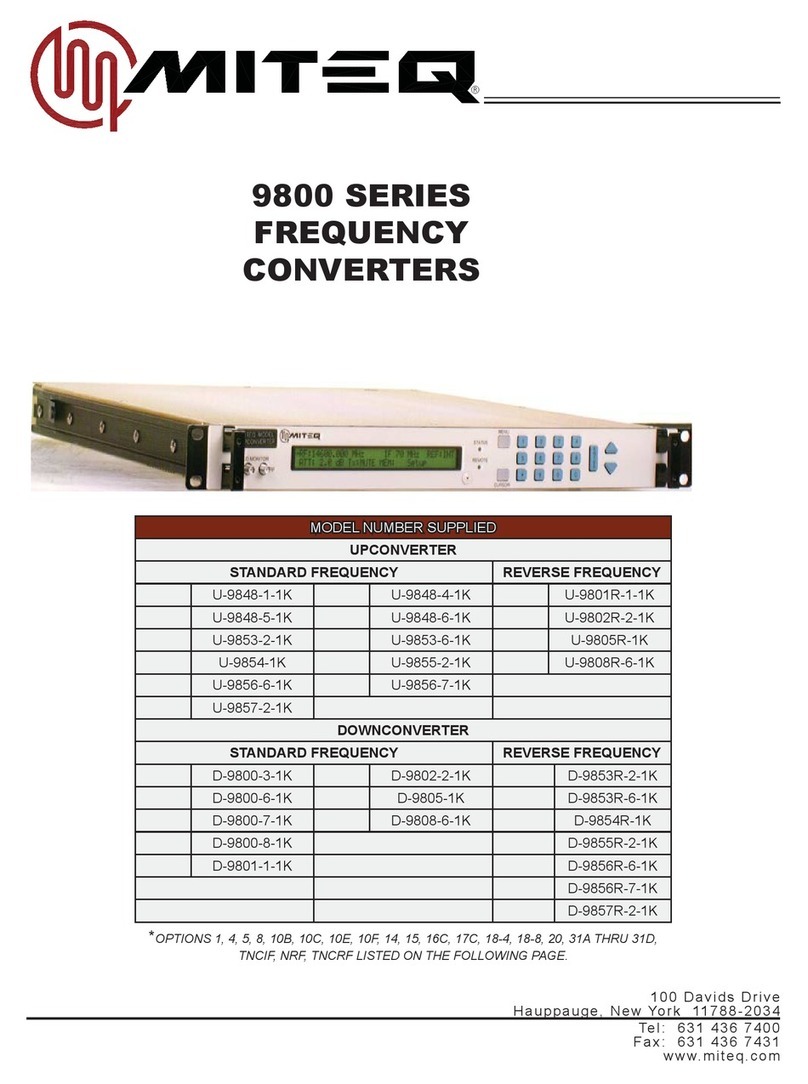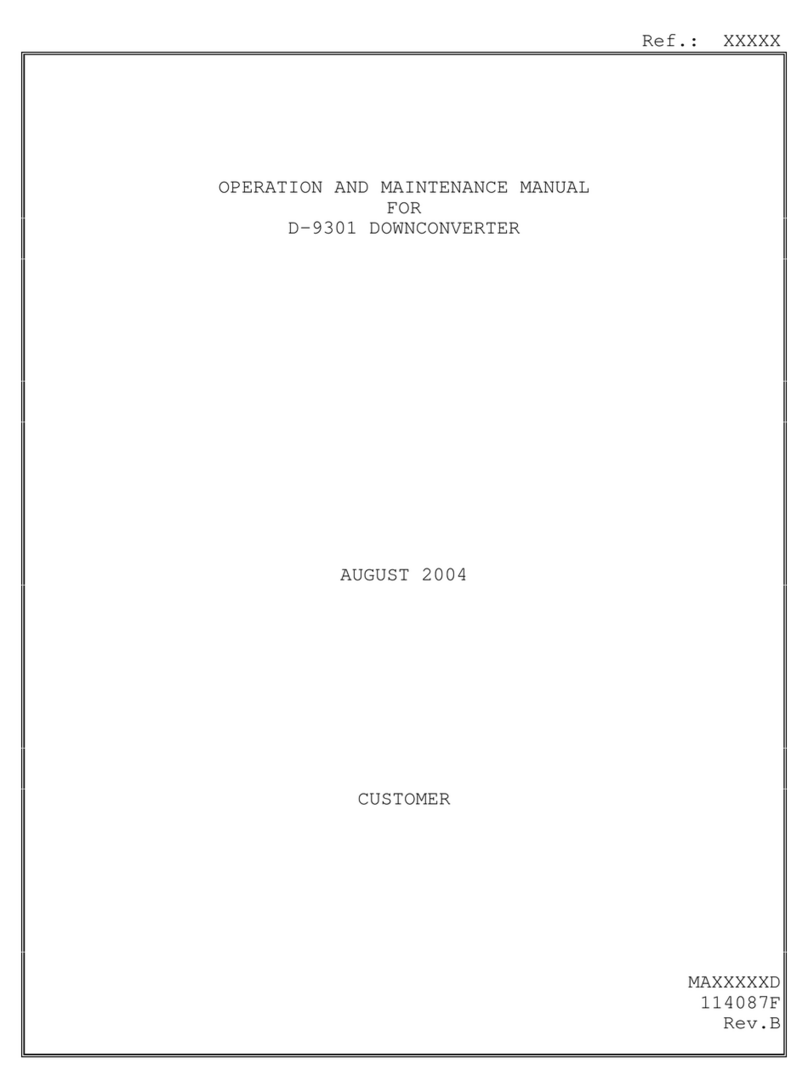
3.2 RS422/485/232 PROTOCOL
All transmissions are multi-byte sequences beginning with a header byte, and ending with a
trailer byte and checksum byte. The transmitted bytes are all ASCII printable characters in the
range of 20H to 7AH.
Data transmission format is a 10 bit sequence consisting of 1 Start, 7 Data, 1 Parity and 1 Stop
bit. To set odd or even parity see Paragraph 3.4. All characters, including the checksum
character, are checked for parity. If any character in the message has a parity, framing or
overrun error, the entire message is ignored and no response is made by the converter.
All messages addressed to the converter are normally acknowledged with a response
message. Before sending the response message a converter configured for RS422 will check
for no activity on the communication bus for a period of at least one character time. If the bus
is active, the response message will be cancelled. This allows a controller to rapidly update a
number of devices on the communication bus without having to wait for a response. When
using this method (available only for RS422) the following restrictions apply:
- Minimum command update period is 100 msecs.
- Multiple commands may not be sent without waiting for a response from each
command.
The converter continually monitors the communications bus and will accept all commands
addressed to it even when in Local mode. When in Local mode, receipt of any commands
other than Status All or Status Faults will be ignored and the converter will respond with an
error code.
3.2.1 DATA TRANSFER
The general message format is as follows:
HEADER - DEVICE ADDRESS - COMMAND/ERROR CODE -
PARAMETERS (if required) - TRAILER - CHECKSUM
The response time from Command to acknowledge is 100 ms. maximum.
Since all bytes are ASCII printable characters, a compatible terminal may be used to control
the converter or monitor traffic on the communication bus.
3.2.1.1 HEADER BYTE
The Header byte is 7BH, ASCII character "{".
3.2.1.2 DEVICE ADDRESS BYTE
There are thirty-two possible addresses. The valid device address range is from 40H to 5FH.
































